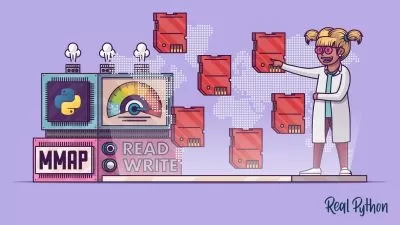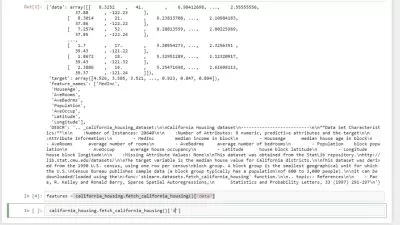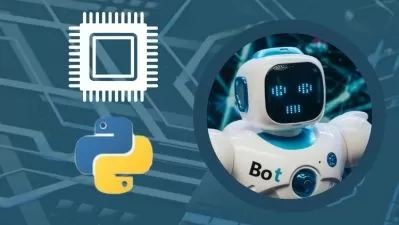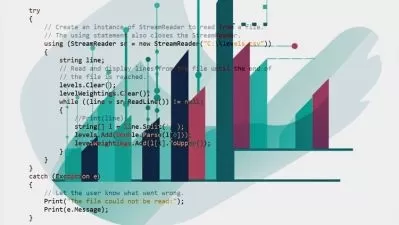Machine Learning Applied to Stock & Crypto Trading - Python
Shaun McDonogh
17:23:58
Description
Use Unsupervised, Supervised and Reinforcement Learning techniques to gain an edge in trading Stocks, Crypto, Forex...
What You'll Learn?
- Understand hidden states and regimes for any market or asset using Hidden Markov Models
- Discover optimum assets for pairs trading in ETF's, Stocks, Forex or Crypto using K-Means Clustering
- Condense information from a vast array of indicators with PCA
- Make objective future predictions on financial data with XGBOOST
- Train an AI Reinforcement Learning agent to trade stocks with PPO
- Test for market efficiency on any given asset
- Become familiar with Python Libraries including Pandas, PyTorch (for deep learning) and sklearn
Who is this for?
What You Need to Know?
More details
DescriptionGain an edge in financial trading through deploying Machine Learning techniques to financial data using Python. In this course, you will:
Discover hidden market states and regimes using Hidden Markov Models.
Objectively group like-for-like ETF's for pairs trading using K-Means Clustering and understand how to capitalise on this using statistical methods like Cointegration and Zscore.
Make predictions on the VIX by including a vast amount of technical indicators and distilling just the useful information via Principle Component Analysis (PCA).
Use one of the most advanced Machine Learning algorithms, XGBOOST, to make predictions on Bitcoin price data regarding the future.
Evaluate performance of models to gain confidence in the predictions being made.
Quantify objectively the accuracy, precision, recall and F1 score on test data to infer your likely percentage edge.
Develop an AIÂ model to trade a simple sine wave and then move on to learning to trade the Apple stock completely by itself without any prompt for selection positions whatsoever.
Build a Deep Learning neural network for both Classification and receive the code for using an LSTM neural network to make predictions on sequential data.
Use Python libraries such as Pandas, PyTorch (for deep learning), sklearn and more.
This course does not cover much in-depth theory. It is purely a hands-on course, with theory at a high level made for anyone to easily grasp the basic concepts, but more importantly, to understand the application and put this to use immediately.
If you are looking for a course with a lot of math, this is not the course for you.
If you are looking for a course to experience what machine learning is like using financial data in a fun, exciting and potentially profitable way, then you will likely very much enjoy this course.
Who this course is for:
- Retail traders who are looking to gain an objective edge in the financial markets
- Enthusiasts who are looking for a practical and fun application of Machine Learning
Gain an edge in financial trading through deploying Machine Learning techniques to financial data using Python. In this course, you will:
Discover hidden market states and regimes using Hidden Markov Models.
Objectively group like-for-like ETF's for pairs trading using K-Means Clustering and understand how to capitalise on this using statistical methods like Cointegration and Zscore.
Make predictions on the VIX by including a vast amount of technical indicators and distilling just the useful information via Principle Component Analysis (PCA).
Use one of the most advanced Machine Learning algorithms, XGBOOST, to make predictions on Bitcoin price data regarding the future.
Evaluate performance of models to gain confidence in the predictions being made.
Quantify objectively the accuracy, precision, recall and F1 score on test data to infer your likely percentage edge.
Develop an AIÂ model to trade a simple sine wave and then move on to learning to trade the Apple stock completely by itself without any prompt for selection positions whatsoever.
Build a Deep Learning neural network for both Classification and receive the code for using an LSTM neural network to make predictions on sequential data.
Use Python libraries such as Pandas, PyTorch (for deep learning), sklearn and more.
This course does not cover much in-depth theory. It is purely a hands-on course, with theory at a high level made for anyone to easily grasp the basic concepts, but more importantly, to understand the application and put this to use immediately.
If you are looking for a course with a lot of math, this is not the course for you.
If you are looking for a course to experience what machine learning is like using financial data in a fun, exciting and potentially profitable way, then you will likely very much enjoy this course.
Who this course is for:
- Retail traders who are looking to gain an objective edge in the financial markets
- Enthusiasts who are looking for a practical and fun application of Machine Learning
User Reviews
Rating
Shaun McDonogh
Instructor's Courses
Udemy
View courses Udemy- language english
- Training sessions 107
- duration 17:23:58
- Release Date 2024/04/13





















